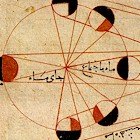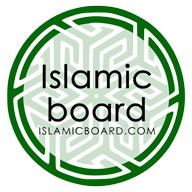Greetings,
Interesting stuff, but what does it have to do with the Enlightenment?
Peace
hey czgibson
ru looking for this
[FONT=Arial, Times New Roman, Palatino, Times]Islam's Contribution To Europe's Renaissance[/FONT]
[FONT=Arial, Times New Roman, Palatino, Times]
HRH, The Prince of Wales, Islam And The West [/FONT]
[FONT=Arial, Times New Roman, Palatino, Times] . . . we have underestimated the importance of 800 years of Islamic society and culture in Spain between the 8th and 15th centuries. The contribution of Muslim Spain to the preservation of classical learning during the Dark Ages, and to the first flowering of the Renaissance, has long been recognized. But Islamic Spain was much more than a mere larder where Hellenistic knowledge was kept for later consumption by the emerging modern world. Not only did Muslim Spain gather and preserve the intellectual content of ancient Greek and Roman civilization, it also interpreted and expanded upon that civilization, and made a vital contribution of its own in so many fields of human endeavour -- in science, astronomy, mathematics, algebra (itself an Arabic word), law, history, medicine, pharmacology, optics, agriculture, architecture, theology, music. Averroes and Avenzoor, like their counterparts Avicenna and Rhazes in the East, contributed to the study and practice of medicine in ways from which Europe benefited for centuries afterwards. [/FONT] [FONT=Arial, Times New Roman, Palatino, Times] Islam nurtured and preserved the quest for learning. In the words of (the Prophet's) tradition "the ink of the scholar is more sacred than the blood of the martyr." Cordoba in the 10th century was by far the most civilized city of Europe. We know of lending libraries in Spain at the time King Alfred was making terrible blunders with the culinary arts in this country. It is said that the 400,000 volumes of its ruler's library amounted to more books than all the of the rest of Europe put together. That was made possible because the Muslim world acquired from China the skill of making paper more than four hundred years before the rest of non-Muslim Europe. Many of the traits on which Europe prides itself came to it from Muslim Spain. Diplomacy, free trade, open borders, the techniques of academic research, of anthropology, etiquette, fashion, alternative medicine, hospitals, all came from this great city of cities. Mediaeval Islam was a religion of remarkable tolerance for its time, allowing Jews and Christians to practice their inherited beliefs, and setting an example which was not, unfortunately, copied for many centuries in the West. The surprise, ladies and gentlemen, is the extent to which Islam has been a part of Europe for so long, first in Spain, then in the Balkans, and the extent to which it has contributed so much towards the civilization which we all too often think of, wrongly, as entirely Western. Islam is part of our past and present, in all fields of human endeavour. It has helped to create modern Europe. It is part of our own inheritance, not a thing apart. [/FONT]
[FONT=Arial, Times New Roman, Palatino, Times]
1001 Inventions: Discover the Muslim Heritage of Our World [/FONT]
[FONT=Arial, Times New Roman, Palatino, Times]

The project supported by the Home Office and the Department for Trade and Industry, uncovers the Islamic civilisation's overlooked contribution to science, technology and art during the dark ages in European history. [/FONT]
[FONT=Arial, Times New Roman, Palatino, Times]
Maria Rosa Menocal, The Ornament of the World: How Muslims, Jews and Christians Created a Culture of Tolerance in Medieval Spain [/FONT]
[FONT=Arial, Times New Roman, Palatino, Times]

[It] is no exaggeration to say that what we presumptuously call 'Western' culture is owed in large measure to the Andalusian enlightenment....This book partly restores to us a world we have lost, a world for which our current monotheistic leaderships do not even feel nostalgia.--Christopher Hitchens, The Nation [/FONT]
[FONT=Arial, Times New Roman, Palatino, Times]
Akbar S. Ahmed, Living Islam [/FONT]
[FONT=Arial, Times New Roman, Palatino, Times] It is well to recall that Islam not only caused Islamic civilization to develop but also enabled the European Renaissance to take root and grow. The time when Islam was most strongly established was also the time when art, culture and literature flourished, whether in Spain or, later, under the Ottomans, the Safavids and the Mughals. Christian Europe was enveloped in darkness until Islam came to the Iberian peninsula. For centuries Islam fed Greek, Sanskrit and Chinese ideas into Europe. Slowly and steadily Europe began to absorb those ideas. In England, France, Germany and Italy society began to explore literature and art with a new perspective; thus the seeds of the Renaissance were sown. -- p. 15 [/FONT]
[FONT=Arial, Times New Roman, Palatino, Times]
James Johnston, Medieval Script Shows Islam's Role in Learning [/FONT]
[FONT=Arial, Times New Roman, Palatino, Times] The manuscript stands as a uniquely important monument to the central role of Jews and Muslims in the spread of knowledge and learning throughout medieval Europe, as well as being possibly the earliest known example of Latin script of any kind written on paper. Sotheby's says that only four other copies of this work are known. [/FONT]
[FONT=Arial, Times New Roman, Palatino, Times]
Washington W. Irving, Tales Of The Alhambra [/FONT]
[FONT=Arial, Times New Roman, Palatino, Times] As conquerors [Muslims], their heroism was equaled only by their moderation, and in both, for a time, they excelled the nations with whom they contended. Severed from their native homes, they loved the land given them as they supposed by Allah and strove to embellish it with everything that could administer to the happiness of man. Laying the foundations of their power in a system of wise and equitable laws, diligently cultivating the arts and sciences, and promoting agriculture, manufactures and commerce, they gradually formed an empire unrivaled for its prosperity by any of the empires of Christendom . . . [/FONT][FONT=Arial, Times New Roman, Palatino, Times]The cities of Arabian Spain became the resort of Christian artisans, to instruct themselves in the useful art. The Universities of Toledo, Cordova, Seville, Granada, were sought by the pale student from lands to acquaint himself with the sciences of the Arabs and the treasure lore of antiquity. -- p. 52 [/FONT]
[FONT=Arial, Times New Roman, Palatino, Times]
Martin Wainwright, Our Debt to Islam [/FONT]
[FONT=Arial, Times New Roman, Palatino, Times] While the barbarians smashed and burned in western Europe, the Arabs and Persians used the libraries of Alexandria and Asia Minor, translated the scrolls and took them to Baghdad and far beyond. In distant Bukhara on the Silk Road to China, a teenager called Abu Ali Ibn Sina was engrossed in Aristotle's Metaphysics at the age of 17. The year was AD997 and the text - central to the subsequent development of philosophy - had long been lost and unknown in western Europe. [/FONT]
[FONT=Arial, Times New Roman, Palatino, Times]
David Self, Christians and Muslims Share a Journey [/FONT]
[FONT=Arial, Times New Roman, Palatino, Times] We are indebted to the Arabic world not only for arithmetic but also for algebra and trigonometry. Logarithms were invented by a mathematician called Al-Khwarizmi in the 7th century. Test tubes, the compass and the first surgical tools were all pioneered by Muslim inventors. A thousand years ago, it is said, Baghdad had 60 hospitals. [/FONT] [FONT=Arial, Times New Roman, Palatino, Times] This scientific flowering was accompanied by the establishment of the first universities - or madrassahs. In a madrassah, the sheik or professor taught, literally, from a chair. He was assisted by readers. When the west eventually replicated such places of learning, we borrowed such terms. [/FONT]
[FONT=Arial, Times New Roman, Palatino, Times]
Jared Diamond, Guns, Germs, and Steel [/FONT]
[FONT=Arial, Times New Roman, Palatino, Times] In the Middle Ages the flow of technology was overwhelmingly from Islam to Europe, rather than from Europe to Islam as it is today. Only around A.D. 1500 did the net direction of flow begin to reverse. -- p. 253 [/FONT]
[FONT=Arial, Times New Roman, Palatino, Times]
Fernand Braudel, A History of Civilizations [/FONT]
[FONT=Arial, Times New Roman, Palatino, Times] The major landmarks in this process of expolitation were: in the sixteenth century, the arrival of 'treasures' (gold and silver ingots) from America; the brutal opening-up of India after the battle of Plassey (23 June 1757), at which the British defeated the nawab of Bengal; the forced expolitation of the Chinese market after the First Opium War in 1839-42; and the partition of Africa at Berlin in 1885. -- p. 388 [/FONT]
[FONT=Arial, Times New Roman, Palatino, Times]
Susan Spano, Revealed: Muslim Traveler Who Rivaled Marco Polo [/FONT]
[FONT=Arial, Times New Roman, Palatino, Times] I had studied medieval Europe ethnocentrically but now can only conclude that during Battuta's time, it was a cultural, political and technological sideshow. In the 14th century, the main event was Dar al-Islam. [/FONT]
[FONT=Arial, Times New Roman, Palatino, Times]
John Edwards, History Today [/FONT]
[FONT=Arial, Times New Roman, Palatino, Times] On the second day of January [1492] I saw Your Highnesses' royal banners placed by force of arms on the towers of the Alhambra . . . and in the same month . . . Your Highness, as Catholic Christians and princes devoted to the holy Christian faith and the furtherance of its cause, and enemies of the sect of Mohammed and of all idolatry and heresy, resolved to send me, Christopher Columbus, to the . . . regions of India. -- vol. 42 [/FONT]


